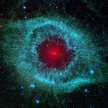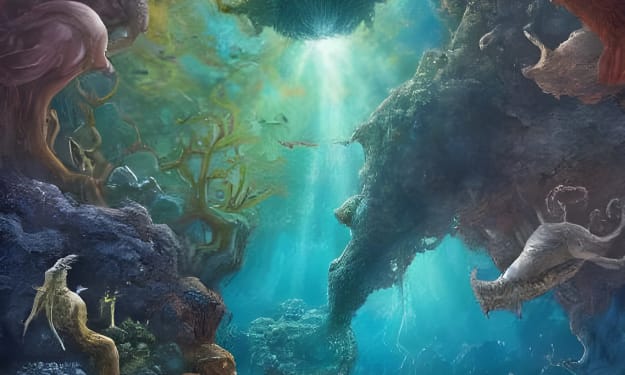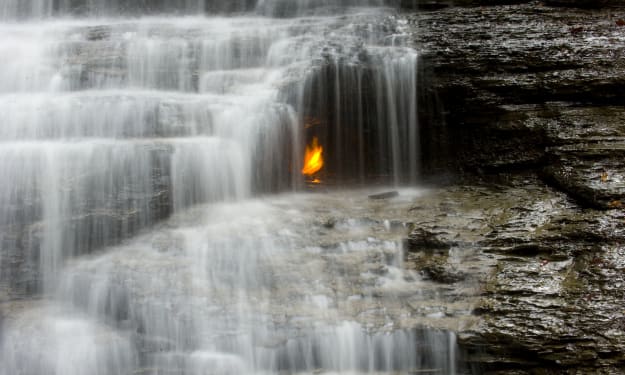The Death of a Massive Star
I write easy-to-understand stories about the universe and life.

British spelling
Here are two of my stories. I hope you find them interesting and educational.
<> <> <>
1/2
The death of a massive star.
The image above shows Cassiopeia A, the remnant of a supernova explosion, they can happen when large stars come to the end of their lives.
This remnant lies 11,000 light-years from the Earth.
One light-year is equivalent to 9.46 trillion kilometres.
A trillion is 1 followed by 12 zeros.
The colours in the image show the different elements that the original star and the supernova created.
A type 1 supernova occurs in binary star systems, that is when two stars are in orbit around the same point, the barycentre.
If one of the stars, a white dwarf, is close enough, it can gather matter from its companion star. Eventually, the white dwarf star accumulates so much matter and becomes so dense and unstable that it explodes, resulting in a type 1 supernova explosion, destroying the whole star.
The most recent supernova that took place outside our galaxy and could be seen with unaided vision was a type 11 supernova named SN1987A. Its light arrived on Earth in February 1987. It is approximately 168,000 light-years away.
A much closer supernova that took place in our galaxy, the Milky Way, was SN 1604, or Kepler’s supernova. Although it was 20,000 light-years away, it shone brighter than any of the stars in the night sky. It was first seen on October 9, 1604.
A low estimate for the number of stars in our galaxy is 100 billion; a higher estimate puts the number at 400 billion, but on average, a supernova will occur only one or two times each century in the Milky Way.
A type 11 supernova occurs when a single high-mass star runs out of fuel, and as a result, some of its mass moves into its core. The core gets so heavy that it can’t withstand its own gravitational force and collapses, resulting in a giant supernova explosion that is so bright that it can briefly outshine the whole galaxy.
Depending on how much mass the original star had, a neutron star or black hole can be the result of a type 11 supernova explosion.
Stars create elements in their cores through a process called nuclear fusion, which starts with fusing hydrogen into helium. Some larger stars can create every element up to iron, but iron is the heaviest element a star will create using fusion.
Elements heavier than iron are created at the time of supernova and kilonova explosions. When stars come to the end of their lives, vast amounts of elements are ejected far out into space.
Sometime in the distant future, these elements will become part of new stars, planets, or some other celestial objects; they might even end up being part of some life form somewhere else in that vast area we call the universe.

Our local star, the Sun, will have a more peaceful end; it is roughly 4.6 billion years old and is estimated to be halfway through its element-producing life.
When the sun runs out of fuel, it will become a red giant and eventually end up as a white dwarf star, but far into the future, it will evolve into a black dwarf star when it ceases to emit any light or heat. That long cooling process could take as long as a quadrillion years.
<> <> <>
2/2
The Earth’s fragile atmosphere.

Our planet is 12,742 kilometres wide, and the atmosphere that covers the Earth is very thin compared to the size of our planet.
An imaginary line 100 kilometres straight up from the surface of the Earth is regarded by most to be the beginning of space; it is known as the Karman line. Approximately 90% of the atmosphere is below the line.
The farther up the atmosphere stretches, the thinner or less dense it gets.
The atmosphere surrounding the Earth is composed of all the gases retained by the Earth’s gravity. It is what we breathe; it keeps us alive.
For many reasons, the earth's atmosphere is very important. That layer of gas protects us and all the other species from the heat and radiation emanating from our local star, the sun.
21% of the atmosphere is composed of oxygen, which is crucial for all life on Earth. The other elements are 78% nitrogen, 0.93% argon, 0.04% carbon dioxide, and trace amounts of other elements. It also contains a large amount of water vapour.
One estimate for all the water the atmosphere can hold at any one time is almost 13,000 cubic kilometres. A cubic kilometre holds one trillion litres of water, which is 1,000,000,000,000. So it is not surprising that we get flooding in many parts of the world.
The term weather describes the state of the atmosphere at certain times and places. Temperature, moisture, clouds, and wind strength are all different components of the weather.
Extreme weather conditions can be described as hurricanes, tornadoes, floods, tropical storms, and lightning strikes, to name a few.

We humans are poisoning our life-giving atmosphere. There are an estimated eight billion people alive at this time, all of whom are contributing in one way or another to the pollution that is poisoning our beautiful world.
When are we going to do something about it before it is too late?
The end.
<> <> <>
You may find my easy-to-understand stories about the universe and life interesting and educational.
If you subscribe to me, you will see my latest stories, Regards.
About the Creator
Unravelling the Universe
We can only imagine what our early ancestors thought as they gazed up at the night sky—were they curious about what the heavens had to hide?






Comments (2)
I'm keen on this article; it's written skillfully and offers great information.
I LIKED YOUR SCIENCE STORIES. OUR UNIVERSE IS FULL OF STARS, PLANETS AND OTHER BEINGS I AM SURE